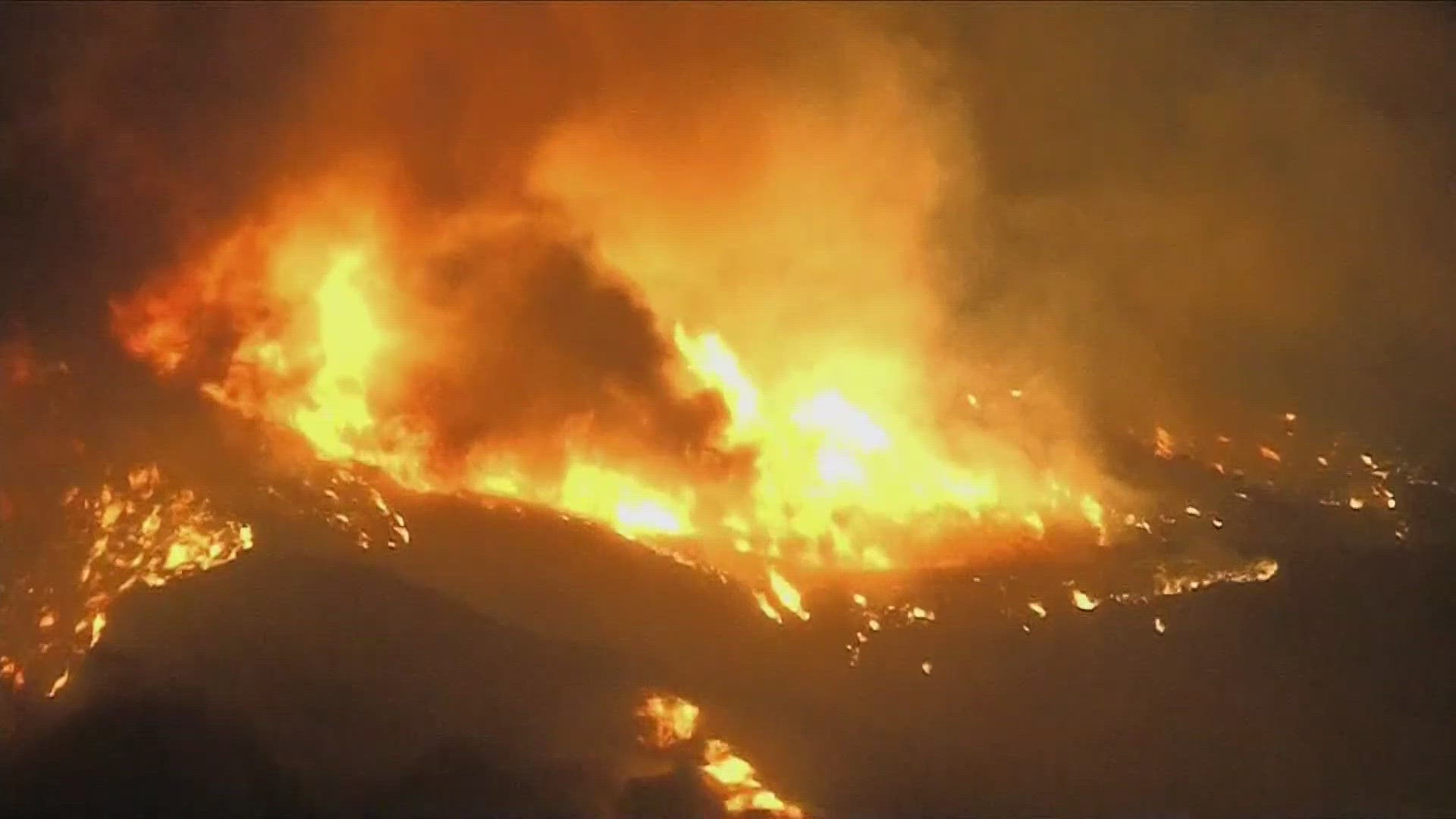ARIZONA, USA — Improving drought conditions in the Southwest may delay the onset of wildfires, but fire experts are still warning that large, catastrophic fires are possible this summer.
“We’ve had a tremendous amount of snowpack in northern Arizona, but there are still factors that come into fire season that can make it a bad one,” said True Brown with Coconino National Forest Fire Management.
Prescribed burns near Flagstaff
Brown said improved moisture conditions across the U.S. will allow fire managers to conduct more prescribed burns in the Coconino National Forest.
On Wednesday, crews conducted low-intensity burn operations over 1,000 acres north of the San Francisco Peaks.
"We will try to carry out as many prescribed fires over the largest possible areas that we can under the most controlled and safest conditions that we deem fit,” Brown said.
Crews are also burning piles of debris that were cut during thinning projects.
Firewise cleanup events in Sedona
Communities in lower elevations like Sedona will likely dry out faster than higher elevations as temperatures warm up.
The Sedona Fire District is hosting 2-day “Firewise Cleanup” events over the next two weekends. This Saturday’s event will be held in the Village of Oak Creek.
Firefighters are asking homeowners to clear flammable vegetation in a 30-foot circumference around their houses. That area is considered the most critical. Homeowners should then evaluate the area 100-200 feet surrounding their home.
"Some of those storms this winter created dead and downed trees and pathways for fire from roadsides to homes. So we ask they pick that up. We'll make it easier for them to drop it off,” said Jayson Coil, Sedona's Assistant Fire Chief.
Seventy-eight percent of wildfires in Yavapai County between 2010 and 2020 were human-caused.
Heavier fuels and climate change add uncertainty
The downside to heavy moisture received during the winter is it creates more fine fuels that burn when temperatures warm up.
“When we see those triple-digit temperatures in the lower part of the state, we're going to see some problematic fires for sure or potential for it,” Brown said.
Experts said climate change, which fuels extreme weather events and more intense heat waves, adds to the uncertainty.
"Climate change creates new variabilities, we see bigger swings and it's tougher to predict out,” Brown said.
Twenty years ago, a wet winter would have meant a more predictable fire season, Coil said. But he said that is no longer the case because long, unusually hot dry spells are becoming the norm.
"The effects of climate change have certainly made it more difficult to manage fires and literally kept me up at night,” Coil said.
“Ready, Set, Go”
Coil also worries about Sedona residents being able to evacuate during a rapidly moving wildfire.
The International Association of Fire Chiefs developed a program, "Ready, Set, Go," to help homeowners prepare for evacuations.
"Unfortunately, there have been a number of fatalities across the West in recent years. People delayed, and when they tried to get out, it was too late,” Coil said.
Residents sensitive to smoke should also prepare for the potential of poor air quality when wildfires are near.
Homeowners should make sure they have a proper air filter on their air-conditioning system.
Arizona Wildfires
Track the latest coverage of the 2022 Arizona Wildfire Season with the current coverage on our 12News YouTube channel.

